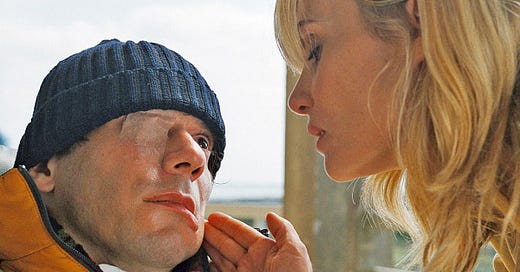Heroes of the Zeroes: The Diving Bell and the Butterfly
Heroes of the Zeroes is a daily, alphabetical look back at the 365 best films of 2000-2009.
"The Diving Bell and the Butterfly" Rated PG-13 2007 Jet-setting ELLE editor Jean-Dominique Bauby suffered a severe stroke in 1995 and awoke from a 20-day coma to near-full paralysis. Only his memory, imagination and left eyelid were unaffected — weapons he united to combat his body’s collapse and dictate a book as a last testament of sorts.
Consider the scope: Someone reciting letters until the right one yielded a blink for “yes,” and having this process form words, sentences, paragraphs, pages, chapters. In 2007’s discomforting, but inspiring, “The Diving Bell and the Butterfly,” director Julian Schnabel fundamentally retooled the biopic template for one of the greatest portrayals of the mind’s eye put to film.
Janusz Kaminski’s first-person-perspective cinematography rendered viewers as defenseless as Bauby, learning a new language in a freshly blurry and frightening world. (Note the crystalline tear as Bauby bids a final goodbye to his father, played by Max von Sydow, in a crushing sequence.)
As Bauby, Mathieu Amalric’s performance is one of physical precision, but Schnabel doesn’t overly lean on an acutely drooped lip or manically active engorged eye.
Adapting to his condition, Bauby finds unexpected beauty in the world around him and rediscovers his comforts and contradictions as hallmarks of humanity, sanity and stubbornness. (A coldly authentic late scene finds him choosing the loneliness of his true love’s absence over the comfort of a past lover who’s been his bedside companion.)
“Butterfly” stood as Schnabel’s most accessible film of his three about artists struggling for expression against nearly unendurable odds, and daringly challenged traditional cinematic interpretations.



